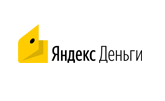
1. Comprensión de lectura
The A1 Comprensión de lectura consists of four tasks:
Task 1: to answer five questions on a medium-length text. Normally this is an email, a postcard or a short letter. The questions contain both verbal and graphical features. Sometimes you should choose the correct picture.
Task 2: to match short texts (notes, announcements, signs, etc.) to the sentences in the table. These sentences should have the meaning similar to the meaning of the text. There are some extra texts.
Task 3: to match short texts (announcements, advertisements, catalogue extracts or booklets) to the sentences that express opinions and comments of different people. Like in the previous task, some announcements are not supposed to match the others.
Task 4: to complete the gaps in the phrases, the information is taken from short texts (announcements, extracts from booklets, posters, plates, etc.)
The A2 Comprensión de lectura consists of 5 parts.
Task 1: there is a small table with short sentences which you should match to short texts (announcements, advertisements, notes).
Task 2: to answer questions on short texts by choosing one variant out of three. The texts are normally letters, emails, faxes or documents related to education (letters of information, request, etc.).
Task 3: there are six texts (announcements, notes, advertisements), each text has one multiple choice question.
Task 4: to match nine short texts to 6 short phrases (three texts are extra ones).
Task 5: to answer questions on a short text (a story, a biography, a blog post, a magazine article, an extract from a travel guide, etc.)
The В1 Comprensión de lectura consists of 5 tasks
Task 1: to match the phrases of speakers or separate sentences to short texts (these could be messages, announcements, advertisements, information related to education).
Task 2: to answer multiple choice questions on a text. Types of texts: articles related to public life, celebrities, education.
Task 3: to answer questions in the table, they are based on three short texts (either questions or somebody’s announcements or stories).
Task 4: to complete the text with the extracts below (catalogues, narrative texts, recipes, useful tips, etc).
Task 5 is a task from the excluded part on grammar. Here you need to complete correct words: prepositions, verbs in different tenses, pronouns, articles and etc.
The В2 Comprensión de lectura consists of 4 parts.
Task 1: a complicated and rather big text with six questions. As a rule, these are newspaper and magazine articles.
Task 2: to find the necessary information in short texts. Normally these are stories of people about their work.
Task 3: to complete the text with extracts (they are given below the text). The texts are mainly newspaper and magazine articles on different topics.
Task 4 is on grammar: we complete the gaps with words (prepositions, verbs, the articles, prepositions, pronouns, etc.).
The С1 Comprensión de lectura consists of five parts.
Task 1: to answer questions on a long and complicated text (contracts, norms and rules, contract clauses, formal letters of information, etc).
Task 2: to complete the text with extracts. The text is rather big, so are the extracts (4-5 lines). The topics are various – essays, magazine, newspaper and internet articles.
Task 3: a big text with questions again. The material: scientific texts, essays, journal articles, etc.
Task 4: to match six texts with 6 short messages. The material: summaries of scientific papers, bibliography, extracts of research articles, etc.
Task 5: grammar. We complete the gaps with words and forms of words.
The С2 Comprensión de lectura consists of six parts.
Task 1: to complete the gaps with the missing words by choosing one of three variants. These are complicated words that are not typical of everyday speech, but they often occur in research papers and literary texts.
Task 2: to complete the gaps with the missing paragraphs. One paragraph is an extra one.
Task 3: to put in order paragraphs, the extracts of reports and dissertations and the phrases below.
- Comprensión auditiva
The А1 Comprensión auditiva consists of 4 parts.
Task 1: to listen to a number of short dialogues (normally 2 lines) and match them to the pictures.
Task 2: to match the short dialogues and phrases to the pictures.
Task 3: to listen and match 2 columns. For examples, 2 weeks and actions done by the speaker during these days.
Task 4: to listen and complete the gaps in short sentences
The level А2 Comprensión auditiva consists of 5 tasks
Task 1: to listen to seven short texts and choose the correct answer to seven questions. Normally the material is advertisements, announcements and notices.
Task 2: to listen to the text and answer six questions by choosing the correct answer. The material: a short quite simple text.
Task 3: we listen to six messages and match them to six short phrases in the exam booklets. The material: different messages from the radio, megaphone and answering machines (warnings, announcements, etc).
Task 4: to listen to a conversation on everyday topics and answer to a number of multiple-choice questions
Task 5: we listen to a conversation and match the short phrases similar to the headings of a conversation to the appropriate pictures.
The В1 Comprensión auditiva consists of five parts.
Task 1: to listen to six short extracts (announcements, private messages, advertisements) and answer one question on each text.
Task 2: to answer the questions on the text. The text is made in the form of a monologue. The character talks about a fact of his or her life (a biography, a personal, social, and professional experience, etc.).
Task 3: six pieces of radio news. We need to answer one question on each piece.
Task 4: we listen to six short monologues/ dialogues on the same topic, write down the necessary information next to the pictures/ the names of speakers.
Task 5: we listen to a conversation between two people and choose the correct answers. The task tests detailed understanding.
The В2 Comprensión auditiva состоит из пяти заданий.
Task 1: we listen to six short conversations and answer six questions about the details of these conversations.
Task 2: we listen to a conversation between two people and mark who belongs a statement to (some statements can be extra ones, i. e. belong to neither of the speakers).
Task 3: we listen to an interview and answer the questions about particular phrases of the text. This tests detailed understanding.
Task 4: we listen to six people (twice to each text) and match the sentences in the table to the number of the person.
Task 5: we listen to a text or monologue which are quite challenging in terms of vocabulary and answer the questions.
The С1 Comprensión auditiva consists of four parts.
Task 1: we listen to a text (a report at the conference, a lecture) and complete the sentences with extracts from the tables.
Task 2: we listen to four conversations (on different topics – from everyday to specific ones) and choose the correct answer, 2 questions on each conversation.
Task 3: we listen to a long conversation between two or three people or an interview and answer the questions. The topics can also be different.
Task 4: we listen to 10 short conversations and choose the correct answer. This task tests the knowledge of everyday speech, set phrases and structures.
The С2 Comprensión auditiva consists of three tasks.
Task 1: to listen to a medium-length text (a report, a piece of news, a speech, a scientific presentation) and choose 5 appropriate phrases out of 12.
Task 2: to listen to a conversation among several people who are talking on the same topic (e.g. the discussion of a new law, a conversation at the conference, etc.) and match the given phrases with the person who expresses similar ideas (or none of the speakers).
Task 3: to listen to a difficult extract from a radio conversation (debates, interviews, discussions) and choose the correct answers.
- 3. Expresión e interacción escritas
The А1 Expresión e interacción escritas consists of two parts.
Task 1: to complete a form
Task 2: to write a short letter/ an email / a note/ an announcement/ a postcard.
The А2 Expresión e interacción escritas consists of three parts.
Task 1: to write a short text in the form of a reply or comments in the blog or forum, or an announcement on the notice board on the internet.
Task 2: to write a letter/ invitation/ message/ note related to education (e. g. to speak about the Spanish language school we are studying at, the teachers and students there, etc.).
Task 3: to write an essay on a topic using the input information (e. g. diary notes, a map, a graph, biographical details, etc.).
The В1 Expresión e interacción escritas consist of two tasks.
Task 1: we need to write a response to the input information (a letter, an announcement, a commentary or a note)
Task 2: to write a text on a particular topic in the particular genre (a message, a task, a blog post, a note).
The В2 Expresión e interacción escritas consists of two tasks.
Task 1: to listen to a recording (!) and use this information to write a text by following the instructions. This is a formal and informal letter.
Task 2: to write an article/ a blog post/ an essay on one of the topics given. We can see a graph or a topic for a blog and magazine article.
The С1 Expresión e interacción escritas consists of two parts.
Task 1: we listen to a recording (a report, a lecture, a presentation) that gives the input information for a narrative or discursive essay.
Task 2: there are two topics. The input information is a situation or a series of graphs. We need to write an article-presentation or a formal letter. It is important to know how to write this type of text.
The С2 Expresión e interacción escritas consists of three parts.
Task 1: to write a text (a report, a presentation, a letter, a message) by using different sources (a recording, an article, a piece of news). This assesses the ability to use several sources for writing a text.
Task 2: to write a text on the basis of a rough copy (a transcript of an interview, a report in the oral form, a draft, a text translated by an automatic translator).
Task 3: to make a text using the input information (graphs, pictures, a text, etc.).
- 4. Expresión e interacción orales
The А1 Expresión e interacción orales consists of four parts.
Task 1. A monologue about yourself. There is some support in the form of topics on which the candidate should talk. You do not need to choose all the topics. The monologue last for 1-2 minutes.
Task 2. A monologue on the topics appropriate for this level (work, studies, a flat, friends,etc). Here you also have a list of topics you are supposed to mention. The duration is 2-3 minutes.
Task 3. A conversation with the examiner on the topics mentioned in the monologues (3-4 minutes).
Task 4. Dialogues based on the pictures. The examiner and candidate ask and answer questions in turns (2-3minutes).
The А2 Expresión e interacción orales consists of four tasks.
Task 1. A monologue on the topic given. You can choose one of several topics. The duration is 3-4 minutes. You can use paper to write down your ideas on the topic you have chosen.
Task 2. A description of a picture. The topics are not difficult: transport, everyday situations, shopping,etc.
Task 3. A conversation on the topic of the picture. The examiner starts the dialogue which is supposed to last for 2-3 minutes.
Task 4. You take a role play card, the examiner has his or her own. You need to have a dialogue for 3-4 minutes following the instructions in the card.
The В1 Expresión e interacción orales consists of four tasks.
Task 1. A monologue on one of the two topics (short texts or tasks).
Task 2. A conversation with the examiner on the topic from the monologue.
Task 3. The candidate should choose one of the two pictures, describe it without preparation, and talk on this topic with the examiner.
Task 4. A conversation with the examiner on the topic of the photos by using a roleplay card.
The В2 Expresión e interacción orales consists of three task.
Task 1. You can choose one topic out of two. Then the candidate receives a short text on a problem and solutions to the problem. It is necessary to make a dialogue using input information and speak on the problem and evaluate the ideas given.
Task 2. There is a photo and a situation. There are also questions which you need to answer by making a host monologue. The situation are from everyday life. It is necessary to express your opinion, feelings and give suggestions.
Task 3. A conversation with the examiner on the topic that is given in cards or the form of a graph.
The С1 Expresión e interacción orales consists of three tasks.
Task 1. A short (3-4 minutes) monologue-summary of a big text (about 800 words).
Task 2. A conversation with the examiner on the monologue from the first task (the formal style).
Task 3. There are different materials (slogans, newspaper headings, photos, etc.), and a speaking task that you need to use and talk to the examiner (the formal style). Here you exchange ideas and opinions, sum up the discussion.
The С2 Expresión e interacción orales consists of three tasks.
Task 1. To use the input material (texts, graphs) and prepare a presentation on the topic.
Task 2. To talk to the examiner on the topic of the presentation.
Task 3. An informal conversation with the examiner on the topic of several newspaper headings.































